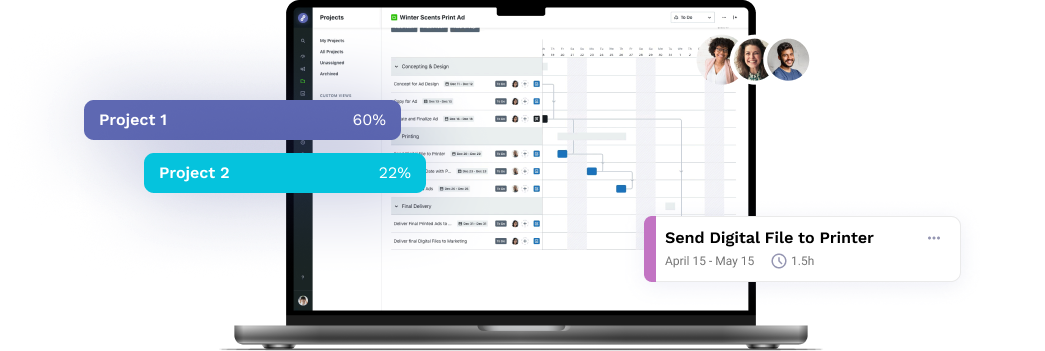
What is Agile?
“
The term “agile” is used to describe several distinct methods of organizing work based on a few guiding principles:
- Be flexible to respond to change rather than following a rigid plan
- Create adaptive, iterative campaigns rather than linear “big-bang” campaigns
- Rely on testing a data rather than opinions and conventions
- Encourage collaboration and autonomy rather than working in silos with traditional hierarchy

Tools of the Trade
“
Features in a software to look for include
- Collaborative Request Intake
- Dynamic Work Views
- Dependences & Resource Management
- Continuous Collaboration
- Workflow Automation
- Reporting
Tips and considerations for going agile
- How big is your team?
- What are your goals, and how do you report on them?
- How can your team pare down work into sprints, and what does being iterative look like?
- What is wrong with your current process?
Ensure a successful implementation
- Customize your workflow
- Audit your tools
- Commit to the process
For brand and creative teams, the ideal solution to their creative workflow needs would include request intake, project management, online proofing, and a robust reporting suite. with unique challenges like these in mind, Lytho Workflow offers brand and creative teams all the features they need to support their agile process.
Lytho helps you streamline your entire workflow and harmonize all brand collateral under a single, uniform platform. Feel free to reach out to us by scheduling a demo and learning how our creative solutions can boost the effectiveness of your creative projects. We look forward to speaking with you!
Do you want to give yourself and your creative team more room for creative stimulation by automating the boring stuff? Lytho helps you streamline your entire workflow and harmonize all brand collateral under a single, uniform platform. Feel free to reach out to us by scheduling a demo and learning how our creative solutions can boost the effectiveness of your creative projects. We look forward to speaking with you!

Ready to simplify your creative operations and start having a little fun at work again? Schedule time to talk with us.
Let us show you how Lytho’s Creative Operations Platform helps in-house creative and marketing teams do better work, ease the stakeholder experience, and stay on brand.
Schedule a Demo